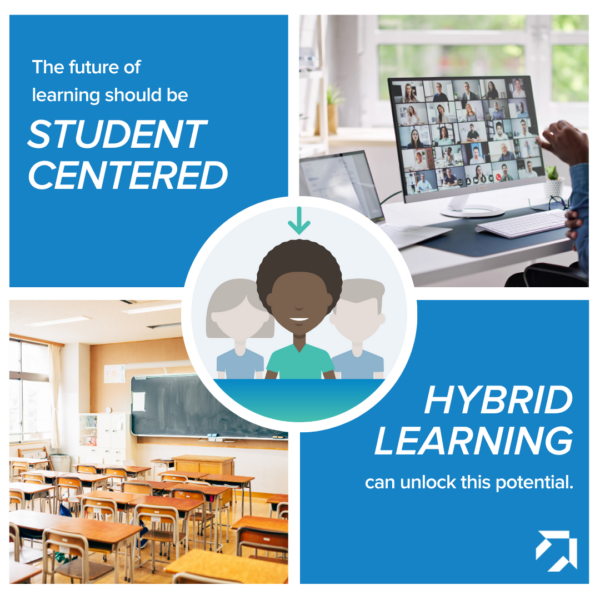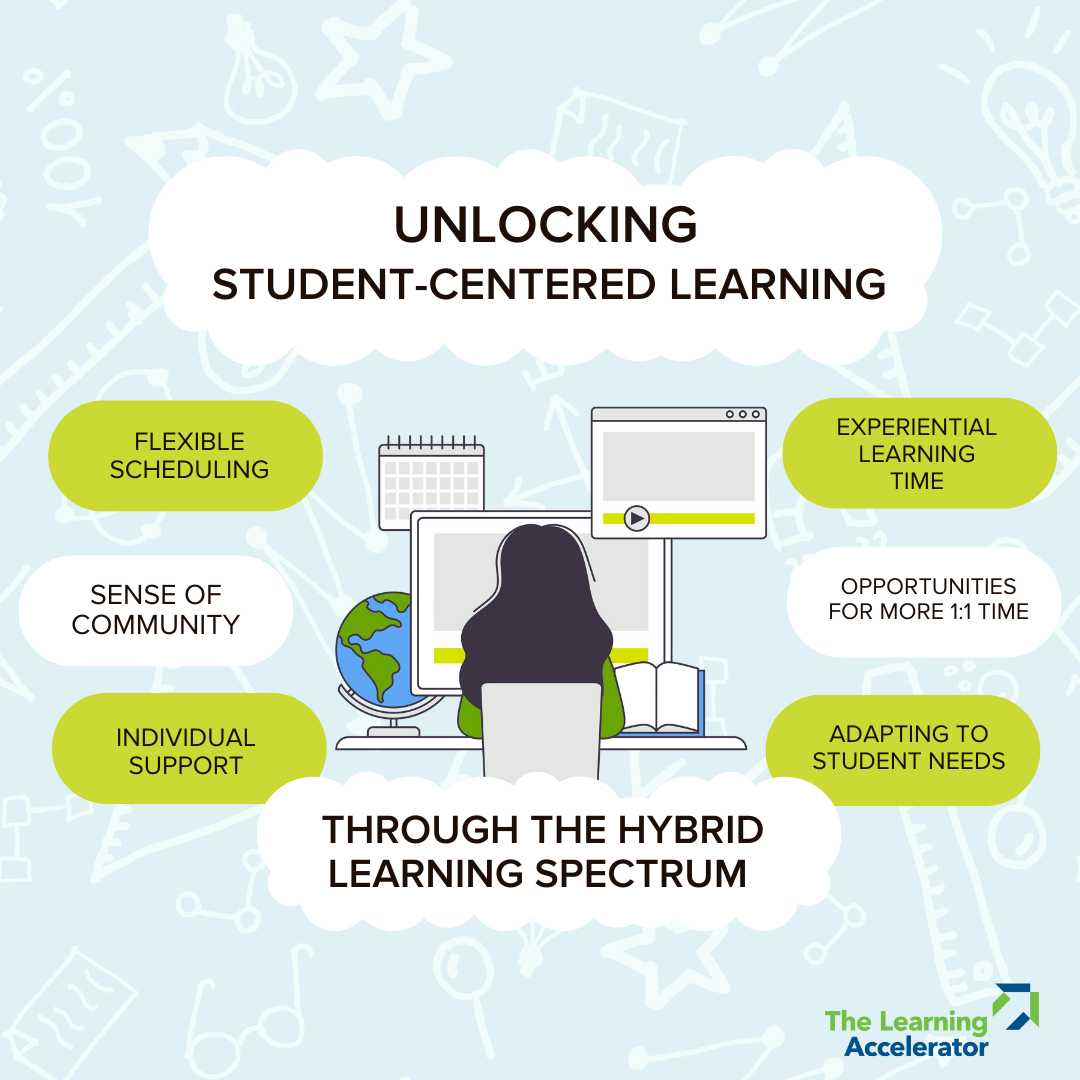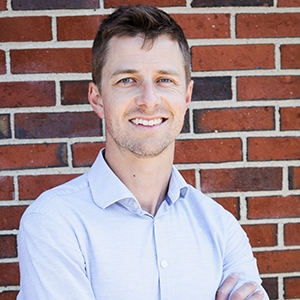
At The Learning Accelerator (TLA), we believe that the future of learning should be student centered. From our work with hybrid and virtual learning programs, we’ve seen how combining virtual learning with in-person learning – what many refer to as “hybrid learning” – is a particularly powerful catalyst to unlock this potential. Leveraging both virtual and in-person capabilities offers a unique opportunity to create hybrid learning environments that flexibly adapt to students’ individual needs.
This post launches TLA’s Future of Learning series, exploring how purposefully balancing virtual and in-person learning can make student-centered learning a reality. Upcoming blogs from leaders of three of TLA’s partner schools – Plymouth-Canton Community Schools’ Virtual Academy in Michigan, MAP Academy in Massachusetts, and ASU Prep Digital in Arizona – will offer diverse examples of hybrid learning. Each model blends brick-and-mortar and virtual schooling elements to meet the particular needs of their community, demonstrating the versatility of hybrid learning to make schools more student centered. Despite their different contexts, the three schools demonstrate two key themes that all schools can consider as they look to leverage hybrid capabilities for more student-centered learning: flexible, purposeful scheduling and an emphasis on human connection.

Virtual Capabilities Allow for Flexible, Purposeful, Student-Centered Scheduling
Breaking out of the constraints of traditional, fully in-person, synchronous learning scheduling creates opportunities for schools to redesign their schedules. By prioritizing student and community needs, schools can create more flexible and student-centered schedules. Our partner schools each leverage this flexibility to build schedules that better serve their students’ needs.
-
Through their collaborative work in TLA’s Strategy Lab, Plymouth-Canton engaged in a redesign process that led them to design a hybrid schedule. The school prioritized students’ needs, including flexibility to work when is best for them, providing greater 1:1 time with their teachers, and structuring in-person days for the normally 100% virtual school.
-
Similarly, as an alternative high school, MAP Academy strategically built a schedule that flexes to their students’ lives outside the building. Whether it be working a job or taking care of a child, MAP Academy students can balance their school work with their responsibilities due to the flexible schedule of the school and school building, as well as creative transportation options that align with it.
-
ASU Prep Digital demonstrates another benefit to flexible scheduling. Their model is designed to balance core academics with external activities and internships aligned to academic pursuits. Eschewing traditional scheduling unlocked new opportunities for ASU Prep Digital to support student-centered, experiential learning.
Student-Centered Hybrid Design Emphasizes Human Connection
While the flexibility of hybrid learning is important, it also can be leveraged to connect students to their peers and teachers. Each of our partner schools has thoughtfully designed their programs to foster human connections, proving that hybrid learning can enhance rather than diminish personal interactions and encourage social learning.
-
Plymouth-Canton’s hybrid model is purpose-built for student-teacher interaction. Asynchronous days include 1:1 teacher check-ins, providing dedicated time for students to receive individual attention and support. Group time in the morning fosters a sense of community and shared purpose, while synchronous instruction provides opportunities for social interaction and collaborative learning.
-
At MAP Academy, students are grouped into “learning studios” that provide a sense of community within the larger school environment. Each learning studio is led by an anchor teacher who acts as an advisor and mentor to the students in the studio, creating a stable, supportive relationship that persists throughout their high school journey.
-
ASU Prep Digital students are paired with a dedicated learning advisor who provides ongoing 1:1 support and mentorship, helping to navigate academic challenges and ensuring that students are connected to their school. Students also connect with industry professionals through internships, creating an additional layer of connection aligned to their real-world learning experiences.
Our work with Plymouth-Canton Community Schools’ Virtual Academy, MAP Academy, and ASU Prep Digital demonstrates that hybrid learning, when thoughtfully designed, can unlock student-centered learning. By leveraging virtual capabilities, each school designed their learning environment to flex to students’ individual needs, schedules, and life circumstances. Together, they demonstrate that hybrid models in a variety of contexts can enable student-centered, flexible scheduling and enhance human connection.
In the coming weeks, we will continue the Future of Learning series, providing an in-depth look into how to leverage virtual and in-person capabilities to create student-centered learning environments. Follow along as we explore how leaders at Plymouth-Canton Community Schools’ Virtual Academy, MAP Academy, and ASU Prep Digital are building the future of education and share practical strategies for creating more student-centered learning environments.
The Future of Learning Series explores how purposefully balancing virtual and in-person learning can make student-centered learning a reality. Check out other installments of the blog series here:

